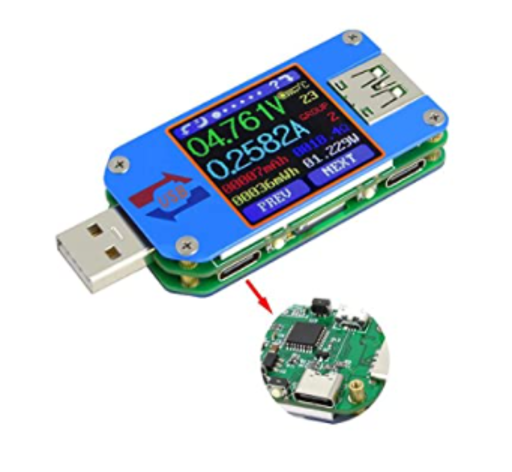In this write-up, we will discover information about the power consumption of different models of the Raspberry Pi.
How power consumption of Raspberry Pi is calculated
According to the definition of Physics, the amount of energy that is transferred or converted from one form to another in a specific time is known as power, now how can we relate this physics definition of power with the power of Raspberry Pi? We can simply say the rate at which electrical energy is transferred by the electrical circuit of the Raspberry Pi is known as the power of Raspberry Pi.
The mathematical formula to find out the power of the Raspberry Pi is:
Now a question arises in the mind: why does the power vary? From the above formula, we can see that the power is dependent on the voltage and current of the Raspberry Pi. The rated voltage at which the Raspberry Pi turns on is 5 Volts which is the same but the current which the Raspberry Pi draws is different in different states so the value of the power of the Raspberry Pi varies.
If the load on the Raspberry Pi is maximum, it will draw maximum current and the power consumption will be maximum, for example, if you have connected the monitor screen with the Raspberry Pi, which will draw more current as compared to the state of Raspberry Pi where you have just connected the Raspberry Pi to the LED circuit on a breadboard.
How much power does the Raspberry Pi consume
There are different states like when the Raspberry Pi is on but you are doing nothing on it is known as the idle state, similarly, when you are watching a video of 1080 resolution the load on the processor of the Raspberry Pi is about maximum. We have calculated the current drawn on these states for different models of the Raspberry Pi and arranged the results in the tabular form to the ease of the readers:
| Model | IDLE | LXDE loaded | 1080 resolution video | 400% CPU loaded |
|---|---|---|---|---|
| Raspberry Pi 4B | 575 mA | 885 mA | 600 mA | 1280 mA |
| Raspberry Pi 3B+ | 400 mA | 690 mA | 510 mA | 980 mA |
| Raspberry Pi Zero W | 120 mA | 160 mA | 170 mA | – |
| Raspberry Pi Zero | 100 mA | 140 mA | 140 mA | – |
The above is the current rating, but we are supposed to find the power, let’s take the value of Raspberry Pi 4 current drawn at 400% CPU load is 1280 mA and we know the voltage of the Raspberry Pi 4 is 5 volts, so according to the mathematical formula of the power:
Likewise we can calculate the power at different states if the current rating is known, similarly, on the IDLE state of the Raspberry Pi 4, the power is 2.875 Watt which means the Raspberry Pi is consuming moreover when the load is increased on the Raspberry Pi. Moreover, to measure the accurate power of the Raspberry Pi, we can use the power meter which is easily available on Amazon.
How to optimize the power of the Raspberry Pi
We can optimize the power of the Raspberry Pi with different small tips like we can power off the onboard LED, we can use the Raspberry Pi from the command line terminal instead of the LXDE desktop environment. We can disable the HDMI if they are not required and can attach the minimum accessories with the Raspberry Pi like mouse and keyboard. Also clocking down the CPU (if you don’t require full power) will help you in optimizing the power of the Raspberry Pi device as it will consume less current. Also, we can use it remotely through the SSH or VNC which will also optimize the power.
Conclusion
The power rate is an important factor for the Raspberry Pi which its user should know, if you are using the Raspberry Pi, you should be familiar with the power consumption because if it is consuming more power, there is a risk that the Raspberry Pi can heat up or break down. In this write-up, we have discussed the power of the different models of the Raspberry Pi and also the tips by which we can optimize the power of the Raspberry Pi.

